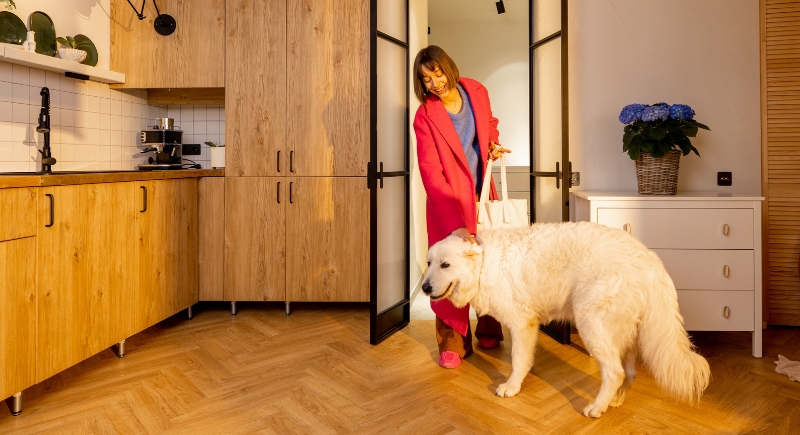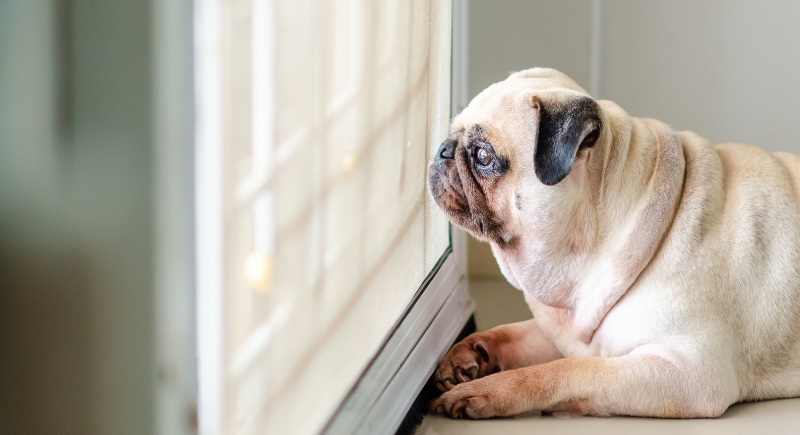The Real Reason Your Dog Loses Its Mind When You Walk Through the Door
Every dog owner knows the moment when the door opens and calm turns into excitement. Your dog darts toward you, tail wagging wildly, whining or circling as if you’ve returned from a long voyage instead of a short trip to the mailbox. It’s more than simple enthusiasm. That greeting reflects instinct, emotion, and the way dogs process time, memory, and attachment.
Dogs Build Attachment Bonds Like Children

Image via Canva/RossHelen
Research shows that dogs develop emotional bonds with their caregivers that closely resemble the attachment patterns of human infants. In studies modeled after psychologist Mary Ainsworth’s “strange situation” experiment, dogs showed clear differences in behavior when their owners were present versus when a stranger was near.
They showed signs of security and relaxation with their owners and stress when separated. This bond explains why reunions trigger such enthusiasm. Your return signals safety and predictability, two things dogs deeply value. As time passes, they associate your presence with food, comfort, and affection. That combination of routine and emotion forms a powerful link and creates the intense greeting ritual you see at the door.
Memory and Learning Drive Recognition

Image via Getty Images/fongleon356
Dogs have strong associative memory, which allows them to connect experiences and cues with outcomes. Even though their short-term memory fades quickly, they store long-term associations that shape their reactions. When your dog hears keys, footsteps, or your car pulling in, those signals trigger learned responses tied to your arrival. And through operant conditioning, dogs learn which actions, such as jumping, spinning, or bringing a toy, draw positive attention.
Eventually, these become ingrained habits reinforced by every delighted “good dog” or smile you give. They also recall specific experiences, such as your scent or tone of voice, which can evoke memories of comfort and familiarity. The door greeting, then, isn’t random, but the result of memory and learning converging to anticipate good things whenever you come home.
Scent, Sound, and Sight Work Together
What most dog owners don’t realize is that a canine’s sense of smell takes the leading role in recognizing its human. Research using brain scans shows that the caudate nucleus—the region linked to reward and anticipation—activates most strongly when dogs smell their owner’s scent. Their olfactory sensitivity far exceeds human capability and paves the way for them to distinguish your unique scent even after days apart.
Once the smell confirms your identity, their hearing takes over. Dogs can recognize individual voices and specific words and respond more quickly to well-known tones. Meanwhile, vision plays the final part by providing confirmation as soon as you appear in sight. Although their vision isn’t as refined as their smell or hearing, it completes the sensory picture. These layered recognitions lead to an unmistakable cue: the person they trust and love most has returned.